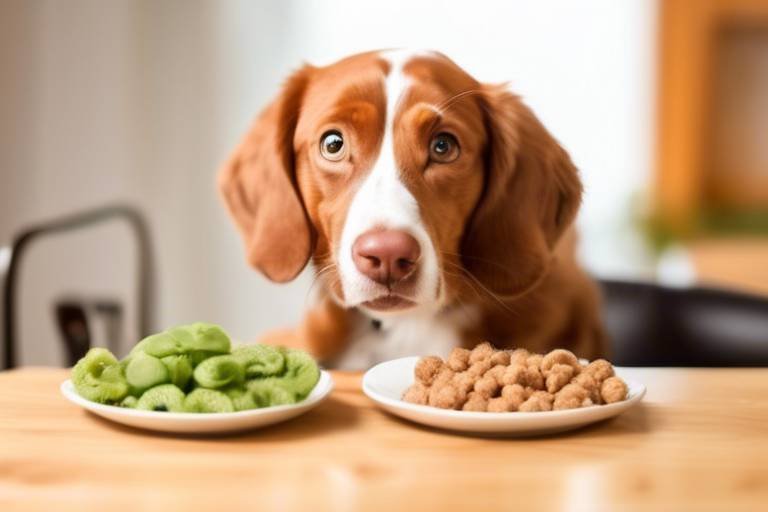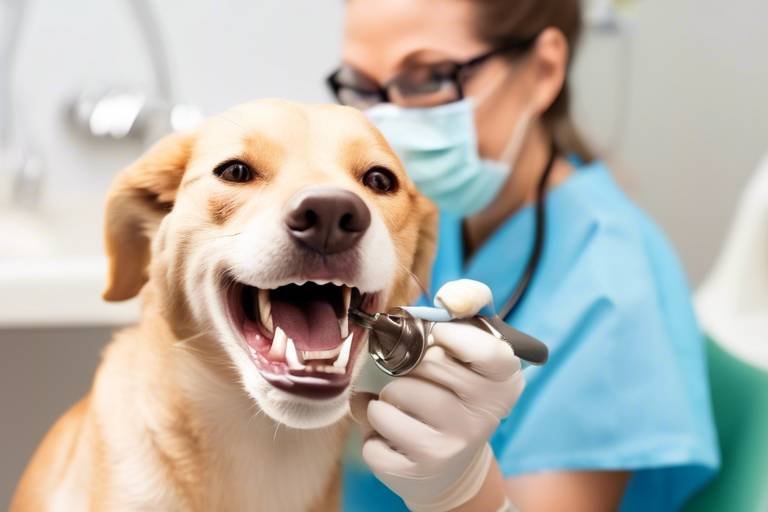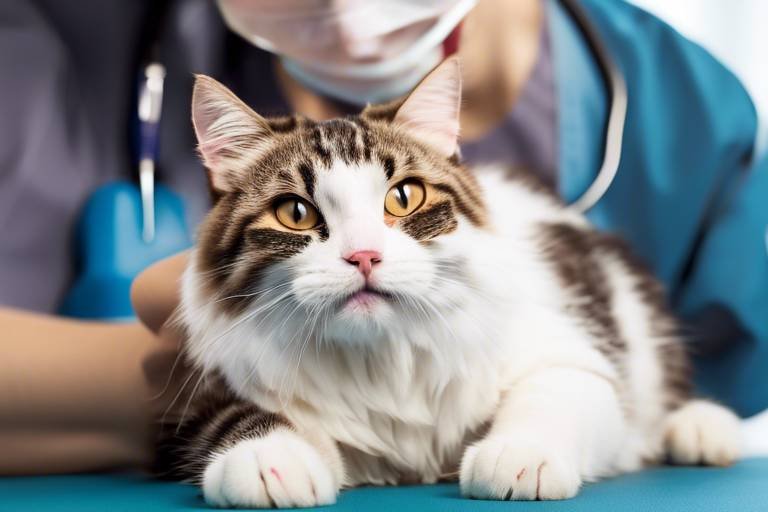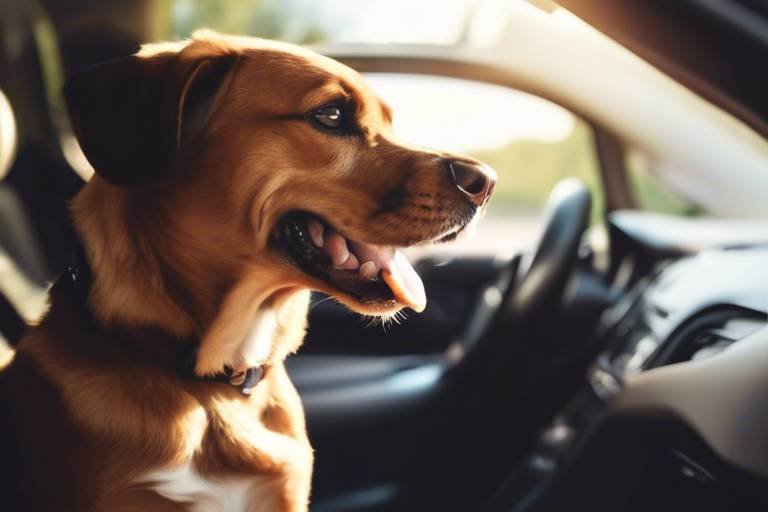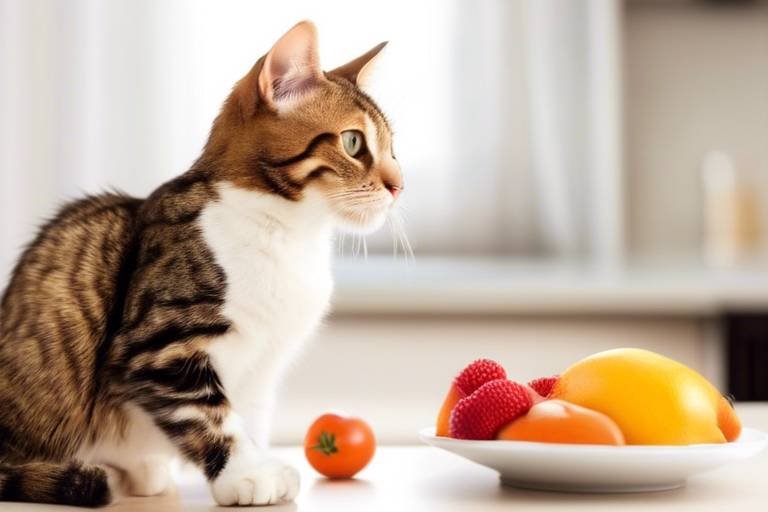How to Safely Introduce New Foods to Your Pet
Introducing new foods to your pet can be a thrilling yet daunting task. Just like us, our furry friends can be quite picky eaters, and their digestive systems may not react well to sudden changes. So, how do you embark on this culinary journey without causing a ruckus in their tummies? The key is to approach this transition with care and knowledge. Whether you’re looking to add some variety to their diet or simply want to treat them to something special, understanding the right way to introduce new foods is essential. This article will guide you through the process, ensuring that your pet enjoys a healthy and delightful food experience.
Before diving into the world of new foods, it’s vital to grasp your pet’s unique nutritional requirements. Every pet is different, and factors such as age, breed, size, and health condition play a significant role in determining what they need. For instance, puppies and kittens require different nutrients compared to adult pets. A well-balanced diet typically includes proteins, fats, carbohydrates, vitamins, and minerals. If you’re unsure about your pet’s dietary needs, consider consulting your veterinarian for tailored advice. After all, a well-fed pet is a happy pet!
When it comes to selecting new foods, it’s important to know which human foods are safe for pets. Not all foods that we enjoy are suitable for our furry companions. Many pet owners are surprised to learn that some common human foods can actually be beneficial for their pets. However, caution is always key. Here’s a quick rundown of some popular options that can be nutritious:
Let’s explore a few categories of foods that can be safely shared with your pets:
Many vegetables and fruits are not only safe but also packed with essential vitamins and minerals. For instance, carrots are great for your dog’s teeth, while blueberries are a fantastic antioxidant treat. However, remember to prepare them properly—wash, peel, and chop them into bite-sized pieces to avoid choking hazards. Here’s a quick table of some safe options:
| Vegetables | Fruits |
|---|---|
| Carrots | Blueberries |
| Green Beans | Watermelon (seedless) |
| Sweet Potatoes | Apples (without seeds) |
Proteins such as lean meats, fish, and eggs can be excellent additions to your pet’s diet. Grains like rice and oats can also provide necessary carbohydrates. However, always ensure that these foods are cooked without seasoning and introduced gradually. Start with small amounts and observe how your pet reacts before making it a regular part of their diet.
While there are many safe options, it’s crucial to know which foods to steer clear of. Some common foods that can be harmful include:
- Chocolate
- Onions and garlic
- Grapes and raisins
- Avocado
- Alcohol
These foods can lead to serious health issues, so it’s best to keep them out of reach!
Now that you know what foods are safe, how do you introduce them? The golden rule here is to go slow. A gradual approach is essential to help your pet adjust without causing digestive upset. Start by mixing a small amount of the new food with their regular food, gradually increasing the new food over a week or so. This method not only helps your pet’s digestive system adapt but also allows you to monitor their reaction. If you notice any signs of discomfort or allergies—like vomiting, diarrhea, or excessive scratching—be sure to revert back to their original diet and consult your vet.
After introducing new foods, keep a close eye on your pet’s behavior and health. Are they excited about the new flavors, or do they seem hesitant? Look for signs of allergies or digestive issues. If your pet shows any adverse reactions, it’s important to stop feeding them the new food immediately. Remember, your pet’s health comes first!
Before making significant changes to your pet's diet, it’s always wise to consult with a veterinarian. They can provide personalized recommendations based on your pet’s health history and needs. This step is crucial in ensuring that your pet is getting the right nutrients and avoiding any potential health risks.
It’s essential to know when to seek professional help. If your pet has pre-existing health conditions, is pregnant, or is showing signs of distress after trying new foods, don’t hesitate to reach out to your veterinarian. They are your best resource for keeping your pet healthy and happy.
Q: How long should I wait before introducing another new food?
A: It’s best to wait at least a week after introducing a new food to ensure your pet has adjusted well before trying something else.
Q: Can I give my pet leftovers from my dinner?
A: While some leftovers may be safe, always check if they contain any harmful ingredients. Stick to plain, unseasoned foods.
Q: What should I do if my pet refuses to eat the new food?
A: If your pet refuses to eat, don’t force it. Try mixing it with their favorite food or offering it at a different time.
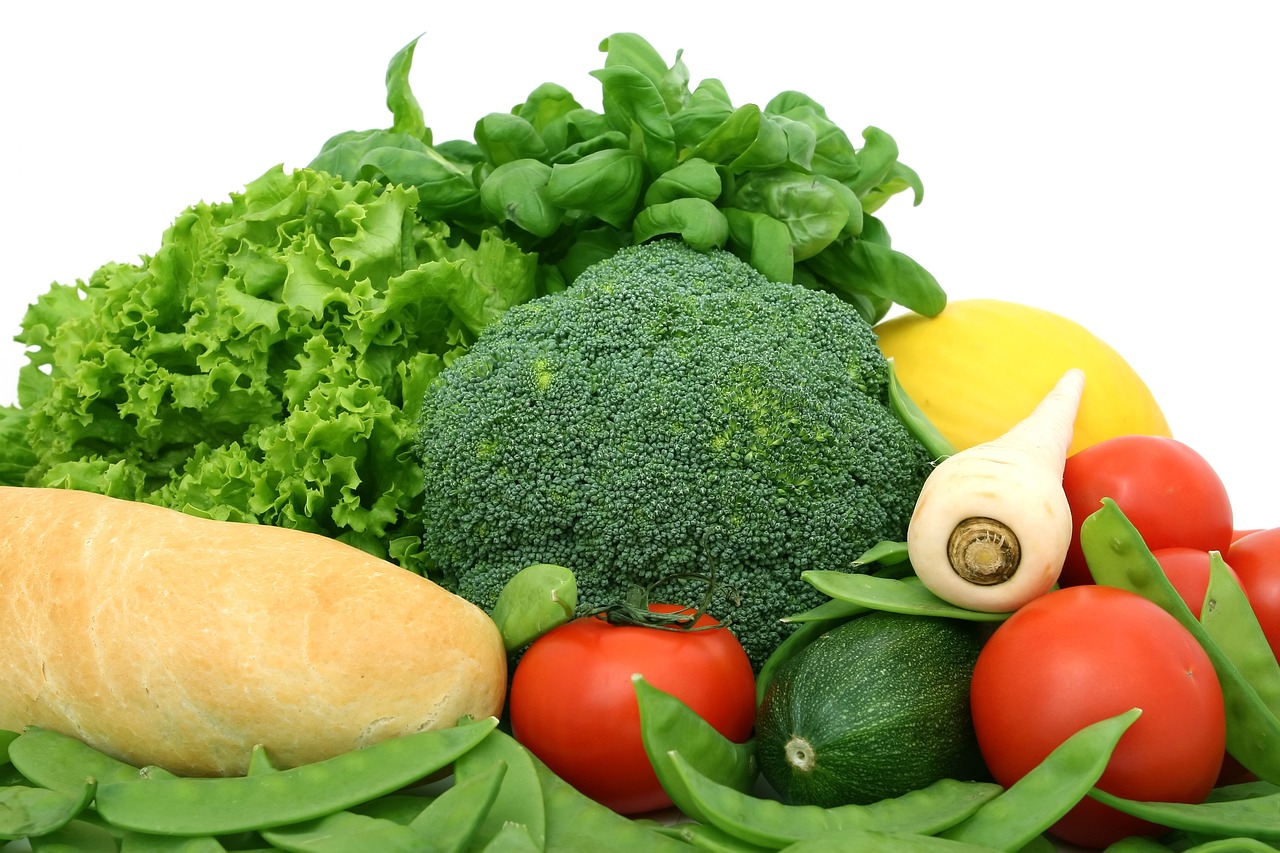
Understanding Your Pet's Nutritional Needs
Before diving into the world of new foods for your furry friend, it's essential to understand their specific nutritional needs. Just like humans, pets require a balanced diet to thrive, and this can vary significantly based on their species, age, size, and health status. For instance, a growing puppy has different dietary requirements compared to an elderly dog. Similarly, a kitten's needs will differ from those of an adult cat. Understanding these differences is crucial for ensuring your pet remains healthy and happy.
One of the first steps in grasping your pet's nutritional needs is to familiarize yourself with the key components of their diet. Pets generally require a mix of proteins, fats, carbohydrates, vitamins, and minerals. Here’s a brief breakdown:
| Nutrient | Function | Sources |
|---|---|---|
| Proteins | Builds and repairs tissues, supports immune function | Meat, fish, eggs, legumes |
| Fats | Provides energy, supports cell structure, aids in nutrient absorption | Fish oil, flaxseed, chicken fat |
| Carbohydrates | Provides energy, aids in digestion | Grains, vegetables, fruits |
| Vitamins | Supports metabolic processes, promotes healthy skin and coat | Leafy greens, fruits, fortified pet foods |
| Minerals | Supports bone health, nerve function, and overall bodily functions | Meat, dairy, vegetables |
Recognizing the specific needs of your pet can prevent potential health issues. For example, a dog with allergies may require a special diet free from certain ingredients, while an overweight cat might benefit from a low-calorie diet. It's also important to consider whether your pet has any medical conditions that might affect their dietary needs. This could include diabetes, kidney disease, or food sensitivities.
Another factor to consider is the life stage of your pet. Puppies and kittens need more calories and nutrients to support their growth, while senior pets often need diets lower in calories to maintain a healthy weight. Here are some general guidelines based on life stages:
- Puppies/Kittens: High protein and fat, with added vitamins and minerals.
- Adult Pets: Balanced diet with appropriate calories to maintain weight.
- Senior Pets: Lower calories, higher fiber, and joint support nutrients.
Finally, always keep in mind that transitioning to new foods should be done gradually. Sudden changes can lead to digestive upset, so it's best to introduce new foods slowly over a week or so. Mix a small amount of the new food with their current diet, gradually increasing the new food while decreasing the old one.
By understanding your pet's nutritional needs, you set the stage for a healthy and enjoyable diet. This knowledge not only helps in choosing the right foods but also in recognizing any signs of discomfort or health issues that may arise from dietary changes. After all, a happy pet is a healthy pet!
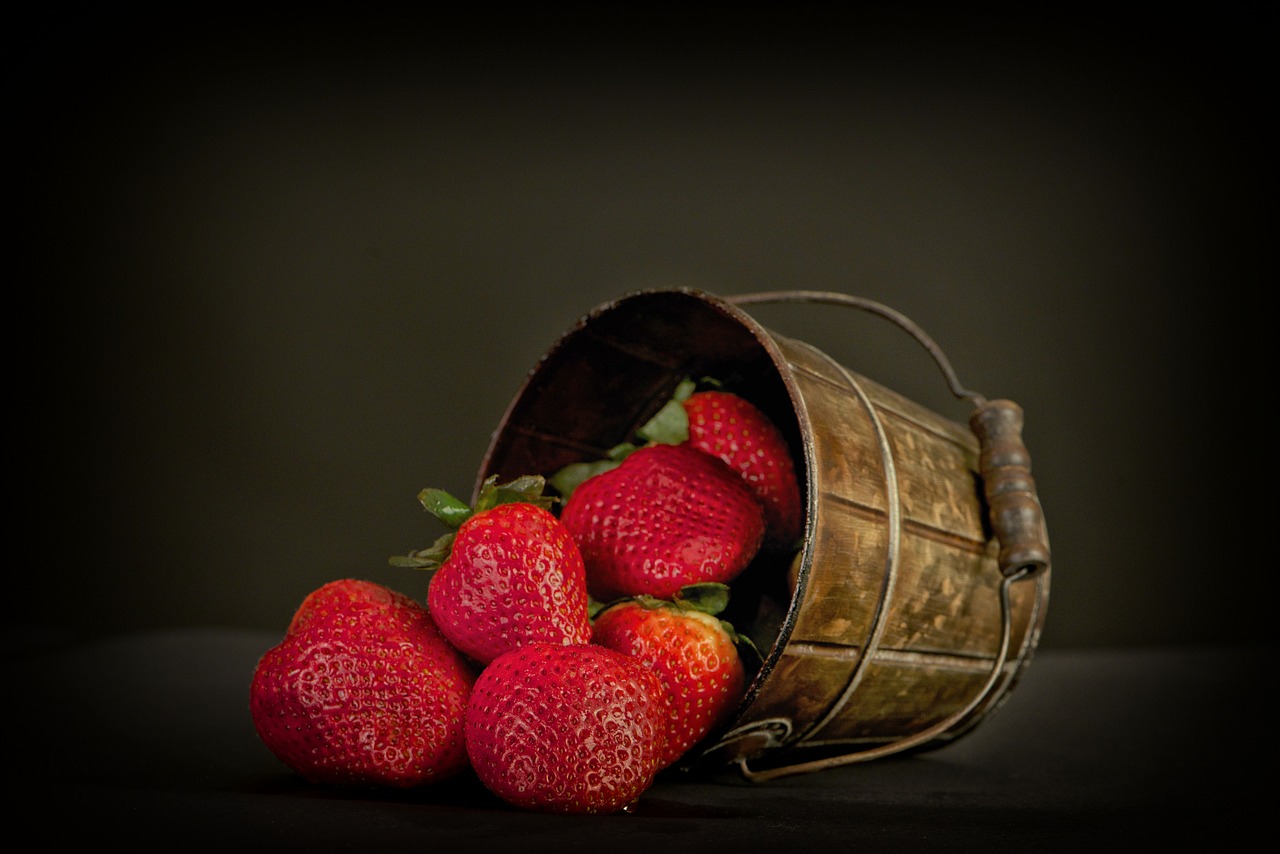
Choosing Safe Foods for Your Pet
When it comes to feeding your pet, making the right food choices can feel like navigating a maze. With so many options available, you might wonder, "What can I safely share with my furry friend?" Understanding which human foods are not just safe but also beneficial is paramount. It's like being a culinary detective, piecing together the puzzle of your pet's dietary needs. You want to ensure that what you offer them is not only tasty but also packed with the nutrients they need to thrive.
First and foremost, it's essential to recognize that not all human foods are created equal. Some can be downright dangerous for pets. For instance, foods like chocolate, grapes, and onions are notorious for causing serious health issues. Therefore, before you toss your pet a morsel from your plate, it's wise to do a little research. You want to avoid any surprises that could lead to a trip to the vet!
So, how do you determine which foods are safe? Start by focusing on whole foods that are commonly known to be pet-friendly. Here’s a quick rundown of some safe options that can be incorporated into your pet's diet:
- Lean Meats: Cooked chicken, turkey, and lean cuts of beef can be excellent protein sources.
- Vegetables: Carrots, peas, and green beans are not only safe but also provide vital vitamins.
- Fruits: Blueberries, apples (without seeds), and watermelon are delicious treats that many pets enjoy.
- Grains: Cooked rice and oatmeal can be great additions, especially for pets with sensitive stomachs.
When selecting safe foods, think about the nutritional balance your pet needs. For example, dogs are omnivores, which means they can benefit from a mix of proteins, vegetables, and grains. Cats, on the other hand, are obligate carnivores, so their diet should primarily consist of meat. Always consider your pet's specific needs based on their species, age, and health status.
Another crucial aspect is preparation. Just because a food is safe doesn't mean it should be served in its raw form. Cooking can eliminate harmful bacteria and make certain foods more digestible. For instance, while many pets can enjoy carrots, they should be cooked or chopped into small, manageable pieces to prevent choking. Always avoid adding any seasoning, as many spices can be harmful to pets.
In summary, choosing safe foods for your pet is about being informed and cautious. By focusing on whole, unprocessed foods and understanding your pet's unique dietary requirements, you can create a diverse and nutritious diet that keeps them healthy and happy. Always remember, what works for one pet may not work for another, so take the time to learn what your individual furry friend enjoys and thrives on.
Q: Can I give my pet leftovers from my dinner?
A: It depends on the leftovers. If they consist of safe ingredients like plain chicken or vegetables, they can be fine. However, avoid anything with sauces, spices, or ingredients that are toxic to pets.
Q: How do I know if a food is safe for my pet?
A: Research is key! Look up lists of safe and unsafe foods for pets, or consult your veterinarian for advice tailored to your pet's needs.
Q: Are there any fruits that are toxic to pets?
A: Yes, some fruits like grapes and raisins can be toxic to dogs and should be avoided entirely. Always check before offering new fruits.
Common Human Foods Safe for Pets
When it comes to sharing our meals with our beloved pets, it's essential to tread carefully. Many of us often wonder, "What can I safely share with my furry friend?" The good news is that there are several human foods that are not only safe but can also be beneficial for your pet's diet. However, it's crucial to introduce these foods thoughtfully and in moderation.
First and foremost, let's talk about vegetables and fruits. These vibrant, colorful foods can be a delightful addition to your pet's meals. For example, carrots are not just crunchy snacks; they are also packed with vitamins and can help keep your dog's teeth clean. Similarly, blueberries are a fantastic source of antioxidants and can be a sweet treat for both dogs and cats. Just remember to wash them thoroughly and cut them into manageable pieces to prevent choking.
Another great category to consider is proteins and grains. Cooked chicken or turkey can be a fantastic protein source for dogs, while cats might enjoy a bit of fish, like salmon, which is rich in omega-3 fatty acids. When it comes to grains, plain, cooked rice or oatmeal can be a gentle addition to your pet's diet, especially if they're experiencing digestive issues. Always ensure that these foods are prepared without any seasoning, as spices can often be harmful to pets.
To give you a clearer picture, here's a quick overview of some common human foods that are generally safe for pets:
| Food | Benefits | Preparation Tips |
|---|---|---|
| Carrots | Rich in vitamins, good for dental health | Wash and cut into bite-sized pieces |
| Blueberries | High in antioxidants | Wash and serve whole or mashed |
| Cooked Chicken | Excellent protein source | Remove skin and bones before serving |
| Plain Rice | Soothes upset stomachs | Cook without seasoning |
While there are plenty of safe options, it’s vital to introduce these foods gradually. Start with small amounts and watch for any signs of digestive upset or allergic reactions. If your pet seems to love these new additions, you can slowly increase the portions over time. Just like we enjoy a variety of foods, our pets can benefit from a diverse diet as well!
In conclusion, sharing safe human foods with your pet can be a rewarding experience. Not only does it provide them with essential nutrients, but it also strengthens the bond between you and your furry companion. Remember, the key is to keep it safe, simple, and gradual. Happy feeding!
- Can I give my pet fruits and vegetables every day?
Yes, but in moderation. Ensure they are safe options and introduce them gradually. - What should I do if my pet has a bad reaction to a new food?
Immediately stop feeding that food and consult your veterinarian. - Are there any human foods I can never give to my pet?
Absolutely. Foods like chocolate, grapes, and onions are toxic to pets and should be avoided at all costs.
Vegetables and Fruits
When it comes to enhancing your pet's diet, can be a fantastic addition! Not only do they offer a burst of flavor, but they also come packed with essential vitamins and minerals that can boost your pet's health. However, it's important to remember that not all fruits and vegetables are safe for our furry companions. So, what should you consider when introducing these colorful foods into your pet's meals?
First, let's talk about the benefits. Vegetables and fruits can be a great source of fiber, which aids in digestion and helps maintain a healthy weight. For instance, adding a small amount of carrots or green beans can be a crunchy treat that many pets enjoy. These foods can also be low in calories, making them perfect for pets that need to shed a few extra pounds. Plus, the vibrant colors of fruits and vegetables can make their meals visually appealing!
Now, you might be wondering how to safely prepare these foods for your pet. It's not just about tossing a piece of fruit or a handful of veggies into their bowl. Preparation is key! Always wash fruits and vegetables thoroughly to remove any pesticides or chemicals. For some pets, it may be necessary to cook certain vegetables to make them easier to digest. For example, sweet potatoes and broccoli should be cooked and cut into small, manageable pieces to avoid any choking hazards.
Here are some safe options you can consider when introducing vegetables and fruits:
- Carrots: Great for dental health and can be given raw or cooked.
- Blueberries: Packed with antioxidants and can be a sweet treat.
- Spinach: Loaded with iron, but should be given in moderation.
- Apples: Remove the seeds and core before offering; a crunchy delight!
However, moderation is the name of the game! While these foods are nutritious, they should not replace your pet's regular diet. Instead, think of them as supplements that can enhance their meals and provide variety. Remember, introducing new foods gradually is essential to prevent any digestive surprises. Start with small amounts and monitor how your pet reacts.
In conclusion, incorporating vegetables and fruits into your pet's diet can be a fun and rewarding experience for both you and your furry friend. Just make sure to do your research, prepare the foods properly, and always keep an eye on your pet's reactions. With a little care, you can turn mealtime into a colorful and nutritious adventure!
Q: Can I give my pet fruits and vegetables every day?
A: Yes, but in moderation! It's important to balance their diet and ensure that fruits and vegetables complement their regular food.
Q: What should I do if my pet has an upset stomach after eating new foods?
A: If your pet shows signs of discomfort, stop feeding them the new food and consult your veterinarian for advice.
Q: Are there any fruits or vegetables that I should avoid?
A: Absolutely! Foods like grapes, raisins, onions, and garlic can be harmful to pets. Always do your research before introducing anything new.
Proteins and Grains
When it comes to your pet's diet, play a vital role in ensuring they receive the necessary nutrients for a healthy life. Just like humans, pets require a balanced intake of proteins to support their muscles, tissues, and overall bodily functions. But how do you know which sources of protein are safe and beneficial for your furry friend? Let's dive into the world of pet nutrition and explore some options!
First off, proteins can come from various sources, and it's essential to choose those that are easy for your pet to digest. For instance, lean meats such as chicken, turkey, and fish are excellent choices. They provide high-quality protein without excessive fat, making them suitable for pets of all ages. If you're considering adding meat to your pet's diet, ensure it’s cooked thoroughly and free from any seasoning or sauces that could be harmful.
In addition to meat, eggs are another fantastic protein source. They’re packed with essential amino acids and can be a delightful treat for your pet. Scrambled or boiled eggs are easy to prepare and can be mixed into their regular food for an extra protein boost.
Now, let's talk about grains. While some pet owners might shy away from grains, they can actually be beneficial when introduced correctly. Whole grains like brown rice, quinoa, and oats provide carbohydrates for energy, along with fiber for digestive health. When introducing grains, it's crucial to cook them thoroughly and serve them in moderation. Too much grain can lead to digestive upset, so always keep an eye on how your pet reacts.
Here’s a quick overview of some safe protein and grain options for your pet:
| Type | Examples | Benefits |
|---|---|---|
| Proteins | Chicken, Turkey, Fish, Eggs | High-quality protein, muscle support |
| Grains | Brown Rice, Quinoa, Oats | Energy, fiber for digestion |
When introducing these proteins and grains, start with small amounts to see how your pet reacts. This gradual approach helps avoid any digestive issues and allows you to monitor their health closely. Remember, every pet is unique, so what works for one might not work for another. Always observe their behavior and health after introducing new foods.
In conclusion, incorporating safe proteins and grains into your pet's diet can enhance their nutrition and keep them happy and healthy. Just remember to introduce these foods slowly, watch for any reactions, and enjoy the journey of exploring new flavors together!
Foods to Avoid
When it comes to our beloved pets, not all human foods are created equal. While it can be tempting to share your meal with your furry friend, some foods can be downright dangerous. Understanding what to avoid is crucial to ensure your pet stays healthy and happy. Just like we wouldn't feed our kids candy for every meal, we need to be mindful of what we give our pets.
Some common foods that should never make it into your pet's bowl include:
- Chocolate: This sweet treat is a big no-no for pets. It contains theobromine, which can cause serious health issues, including heart problems and seizures.
- Onions and Garlic: These flavorful additions to our meals can be toxic to pets, leading to gastrointestinal upset and even damage to their red blood cells.
- Grapes and Raisins: While they might seem harmless, these fruits can lead to kidney failure in dogs, and even a small amount can be dangerous.
- Avocado: This trendy fruit contains persin, which can be harmful to pets, particularly in large amounts.
- Alcohol: It’s shocking, but some pet owners might not realize that alcohol can be incredibly toxic to pets, leading to severe health issues and even death.
Additionally, caffeine is another substance that should be kept away from pets. Whether it's coffee, tea, or energy drinks, caffeine can lead to restlessness, rapid breathing, and heart palpitations. It’s like giving your pet a double espresso—definitely not a good idea!
Another common mistake is feeding pets high-fat foods, such as fried foods or fatty cuts of meat. These can lead to pancreatitis, a painful and serious condition that can put your pet's life at risk. Instead of offering leftover pizza or fried chicken, consider healthier options that are safe for your pet.
Lastly, be cautious with bone fragments. While it might seem natural to give your dog a bone, cooked bones can splinter and cause choking or severe internal injuries. Opt for specially designed chew toys instead, which can provide the satisfaction of chewing without the risks.
In summary, it’s essential to be aware of what foods can harm your pets. Always do your research before introducing any new foods into their diet, and when in doubt, consult your veterinarian. Keeping your pet safe is the ultimate goal, and knowing which foods to avoid is a significant step in that direction.
Q: Can I give my pet table scraps?
A: While some table scraps may be safe, it's best to avoid giving your pet human food altogether. Stick to pet-specific diets unless you're certain the food is safe.
Q: What should I do if my pet eats something harmful?
A: If you suspect your pet has ingested something toxic, contact your veterinarian or an emergency pet poison hotline immediately for guidance.
Q: Are there any safe human foods I can share with my pet?
A: Yes! Many fruits and vegetables like carrots, blueberries, and sweet potatoes can be healthy treats for your pet. Always check for safety first!
Q: How can I ensure my pet's diet is balanced?
A: Consult with your veterinarian to create a diet plan tailored to your pet's specific needs, which may include a mix of commercial pet food and safe human foods.

Gradual Introduction Techniques
Introducing new foods to your pet can feel like navigating a minefield, right? You want to ensure your furry friend enjoys a varied diet, but you also worry about their delicate stomachs. The key to a successful transition is to do it gradually. This method not only helps your pet adjust but also minimizes the risk of digestive issues. So, how do you go about this? Let’s break it down.
First and foremost, start by mixing a small amount of the new food with your pet’s regular diet. For example, if you're introducing a new type of kibble, mix about 10% of the new kibble with 90% of their usual food. This way, your pet can slowly acclimate to the new taste and texture without overwhelming their system.
Over the course of about a week, you can gradually increase the proportion of the new food. By the end of this period, aim for a ratio of 50/50. If your pet seems to be handling this well, you can continue the transition until they are fully accustomed to the new food. The entire process can take anywhere from one to two weeks, depending on how sensitive your pet's stomach is.
It’s also important to monitor your pet closely during this transition. Keep an eye out for any signs of discomfort or digestive upset, such as vomiting, diarrhea, or changes in appetite. If you notice any adverse reactions, it may be wise to slow down the introduction process or even revert to their previous diet temporarily.
Now, let’s talk about some practical techniques you can employ during this gradual introduction:
- Consistency is Key: Stick to a regular feeding schedule. This helps your pet know when to expect meals and can reduce anxiety about new foods.
- Positive Reinforcement: Encourage your pet by praising them when they eat the new food. This can create a positive association with the new flavors and textures.
- Texture Matters: If your pet is reluctant to try new foods, consider altering the texture. For example, you might try soaking dry kibble in warm water to soften it, making it more appealing.
Another technique is to create a food diary to track your pet's reactions. Note down what new foods you introduced, the amounts, and any changes in their behavior or health. This can be a valuable resource to discuss with your veterinarian if any concerns arise.
Ultimately, patience is your best friend during this process. Just like humans, pets can be picky eaters, and it might take some time for them to embrace new flavors. So, take it slow, be observant, and make the transition as smooth as possible. After all, a happy pet is a healthy pet!
Q: How long should I take to introduce new foods to my pet?
A: Gradually introducing new foods can take anywhere from one to two weeks, depending on your pet's sensitivity. Start with small amounts and increase gradually.
Q: What should I do if my pet refuses to eat the new food?
A: If your pet refuses to eat the new food, try mixing it with their favorite treats or foods. You can also try altering the texture or temperature to make it more appealing.
Q: When should I consult a veterinarian during this process?
A: If your pet shows any signs of digestive upset or if you have concerns about their diet, it’s best to consult a veterinarian for personalized advice.
Monitoring Your Pet's Reaction
When you introduce new foods to your pet, it's not just about the excitement of sharing a tasty treat; it's also about closely monitoring their reaction. Just like humans, pets can have varied responses to different foods, and being attentive can prevent potential health issues. So, what should you be on the lookout for? Well, there are several signs that can indicate how your pet is adjusting to their new diet.
First and foremost, keep an eye on their digestive health. Is your pet experiencing any unusual symptoms such as vomiting, diarrhea, or excessive gas? These could be red flags that the new food isn't agreeing with them. For instance, if you notice your dog suddenly has an upset stomach after trying a new protein source, it might be best to revert to their previous diet and consult your veterinarian.
Next, consider your pet's energy levels. A sudden change in diet can sometimes lead to fluctuations in energy. If your usually playful cat seems lethargic or your dog is less enthusiastic about walks, it might be time to reassess the new food. Pets are creatures of habit, and any significant change in their behavior warrants attention.
Additionally, pay attention to their appetite. Is your pet excited about mealtime, or are they turning their nose up at the new food? A lack of interest can indicate that the food is not appealing or suitable for them. On the flip side, if they are devouring everything in sight, it might be a sign that the food is too rich or they are simply overeating.
To make tracking these reactions easier, you might consider keeping a food diary. Document what new foods you introduce, along with your pet's reactions over a period of days. This can help you identify patterns and make informed decisions about their diet. You can use a simple table like the one below to keep track:
| Date | Food Introduced | Reactions Observed |
|---|---|---|
| Day 1 | Carrots | Enjoyed, no issues |
| Day 2 | Chicken | Vomiting after meal |
| Day 3 | Brown rice | Normal appetite, good energy |
Lastly, don't hesitate to reach out to your veterinarian if you notice any concerning signs or if you are unsure whether a reaction is normal. Your vet can provide valuable insights and help you navigate any dietary changes. Remember, your pet's health and happiness are the top priorities, and being proactive about their dietary adjustments can lead to a healthier, happier life for your furry companion.
- What should I do if my pet has a bad reaction to new food? If your pet shows symptoms like vomiting or diarrhea, stop feeding them the new food and consult your veterinarian immediately.
- How long should I monitor my pet after introducing new food? It's advisable to monitor your pet for at least 48 hours after introducing any new food to observe any potential reactions.
- Can I mix new food with their regular food? Yes, mixing a small amount of new food with their regular food can help ease the transition.

Consulting with Your Veterinarian
When it comes to your pet's health, there’s no such thing as being too careful. Consulting with your veterinarian before making significant changes to your furry friend's diet is not just a good idea; it's essential. Just like we have unique dietary needs based on our age, weight, and health conditions, pets are no different. A veterinarian can provide tailored advice that considers your pet's specific health profile, ensuring that any new foods you introduce are safe and beneficial.
For instance, if your pet has a history of allergies, certain foods that are generally safe for other pets might not be suitable for them. This is where your vet’s expertise comes into play. They can help you navigate the complexities of pet nutrition, making recommendations that align with your pet's health goals. Think of your veterinarian as your pet's personal nutritionist, equipped with the knowledge to help you make the best choices.
Moreover, your vet can assist in developing a gradual introduction plan for new foods, which is crucial for avoiding digestive upset. They might suggest starting with small portions and observing your pet's reaction before fully integrating a new food into their diet. This method not only helps in identifying any adverse reactions but also allows your pet to adjust to new flavors and textures without overwhelming their system.
Here are a few scenarios where consulting a veterinarian is particularly important:
- If your pet has existing health issues, such as diabetes or kidney disease.
- When introducing a new food that is significantly different from their current diet.
- If your pet shows signs of food allergies, such as itching or gastrointestinal upset.
- When considering homemade diets or raw feeding options.
In addition to these scenarios, regular check-ups with your veterinarian can help monitor your pet’s overall health and nutrition. They can track changes in weight, coat condition, and energy levels, all of which can be influenced by diet. A proactive approach to your pet’s health, including regular consultations, can lead to a happier, healthier life for your furry companion.
Knowing when to reach out to your veterinarian can save you and your pet from unnecessary stress. If you notice any unusual behavior after introducing a new food—like vomiting, diarrhea, or lethargy—it’s crucial to contact your vet immediately. These symptoms could indicate an adverse reaction or an underlying health issue that needs prompt attention. Additionally, if your pet refuses to eat new food after several attempts, don’t hesitate to ask your vet for alternative suggestions. They can help you find options that your pet will enjoy while still meeting their nutritional needs.
In conclusion, your veterinarian is an invaluable resource in your pet's journey to a diverse and healthy diet. Their expertise can guide you through the process of introducing new foods safely and effectively, ensuring your pet enjoys a balanced diet that promotes long-term health. So, don’t hesitate to pick up the phone or schedule an appointment; your pet deserves the best!
When to Seek Professional Advice
When it comes to your pet's health, **being proactive** can make all the difference. If you're considering introducing new foods into your pet's diet, there are specific situations where consulting a veterinarian is not just advisable, but essential. For instance, if your pet has a history of food allergies or sensitivities, it’s crucial to get tailored advice from a professional. A veterinarian can provide insights into what foods might trigger adverse reactions and help you craft a diet that minimizes risks.
Additionally, if your pet has any underlying health conditions—such as diabetes, kidney disease, or obesity—it's vital to consult with your vet before making any dietary changes. Certain foods that may be safe for healthy pets could exacerbate existing health issues. For example, some fruits that are generally considered healthy can be high in sugar, which may not be suitable for pets with diabetes.
Another key moment to seek professional advice is if you notice any **unusual symptoms** after introducing new foods. Signs such as vomiting, diarrhea, or lethargy can indicate that your pet is having a negative reaction to something new in their diet. In these cases, it’s best to err on the side of caution and reach out to your veterinarian immediately.
Here’s a quick breakdown of scenarios when you should definitely consult your vet:
- Your pet has a known food allergy or sensitivity.
- They have existing health conditions that could be affected by diet changes.
- You observe any adverse reactions after introducing new foods.
- You’re unsure about the nutritional needs specific to your pet's breed or age.
Remember, your veterinarian is your best ally in ensuring your pet’s dietary changes are safe and beneficial. They can provide personalized recommendations based on your pet's unique health profile, ensuring that you make informed decisions that promote their well-being. After all, a happy and healthy pet is what every pet owner strives for!
Q1: How can I tell if a food is safe for my pet?
A1: Always research the specific food and consult with your veterinarian. Some human foods are safe, while others can be harmful.
Q2: What should I do if my pet has a bad reaction to a new food?
A2: Immediately stop feeding the new food and consult your veterinarian for guidance.
Q3: How long should I wait before introducing another new food?
A3: It’s best to wait at least a week after introducing a new food to observe any reactions before trying another.
Q4: Can I give my pet table scraps?
A4: While some table scraps are safe, many can be unhealthy or toxic. Always check with your vet first.
Frequently Asked Questions
- What should I consider before introducing new foods to my pet?
Before introducing new foods, it's essential to understand your pet's specific dietary needs. Different pets have varying nutritional requirements based on their age, breed, and health status. Always ensure that any new food complements their existing diet and provides balanced nutrition.
- Are there human foods that are safe for pets?
Yes, many human foods can be safely shared with pets! Some popular options include carrots, apples, and cooked chicken. However, it's crucial to prepare these foods correctly and ensure they are free from harmful additives like salt or spices.
- What are some common foods I should avoid giving my pet?
There are several human foods that can be harmful to pets. Common culprits include chocolate, grapes, onions, and garlic. These foods can lead to serious health issues, so it's best to stick to pet-safe options.
- How can I gradually introduce new foods to my pet?
Gradual introduction is key! Start by mixing a small amount of the new food with your pet's regular food. Over several days, slowly increase the proportion of the new food while decreasing the old one. This helps your pet's digestive system adjust without causing discomfort.
- What signs should I look for when introducing new foods?
Keep an eye on your pet's behavior and health after introducing new foods. Look for signs such as changes in appetite, vomiting, diarrhea, or lethargy. If you notice any unusual symptoms, it may be best to revert to their previous diet and consult a veterinarian.
- When should I consult my veterinarian about my pet's diet?
If you're considering significant changes to your pet's diet or if your pet has specific health concerns, it's wise to consult your veterinarian. They can provide personalized recommendations that ensure your pet's nutritional needs are met safely.
- Can I mix different types of proteins in my pet's diet?
Yes, but do it carefully! Introducing different protein sources can provide variety and essential nutrients. However, ensure that each type of protein is introduced gradually and monitor your pet's reactions to avoid any digestive issues.

